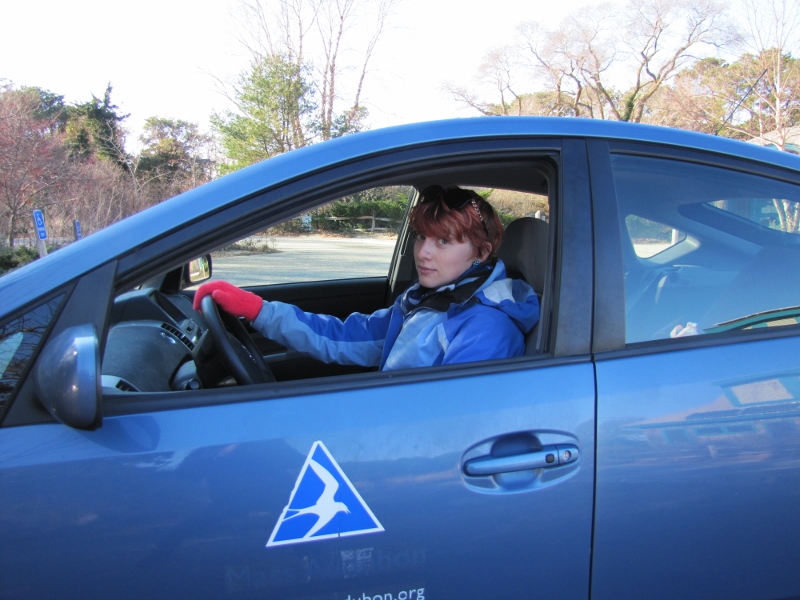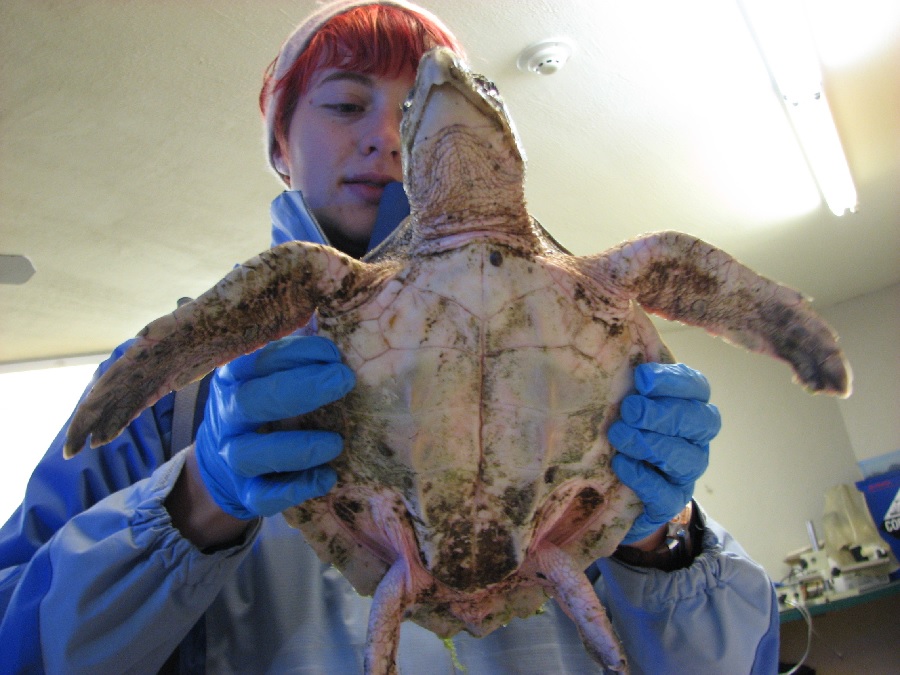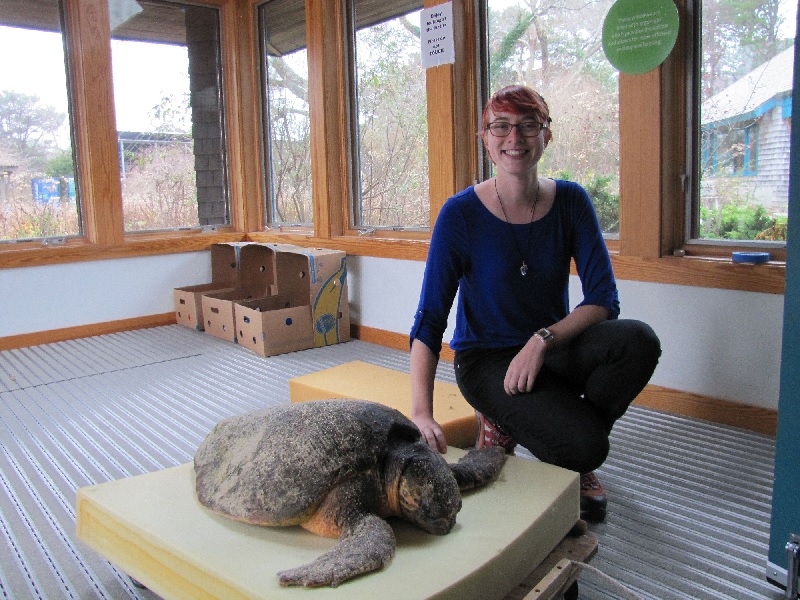One day, only two weeks ago, I found myself driving down 6A, heading to Wellfleet. The windows were down, and I sat inside bundled in mittens and a winter jacket. To the other drivers I probably looked somewhat deranged, but to someone in the know the message was clear: there were sea turtles onboard. The turtles, each nestled in their own banana box, had to be held at about 50° until they could be brought to the New England Aquarium’s Animal Care Center in Quincy. At that moment, I barely registered the fact that I was sharing a vehicle with eight of the most endangered sea turtles on the planet. In only a few weeks, I felt like I had become a seasoned veteran of the sea turtle stranding season. I could declare facts about wind direction with authority and had a corps of over 250 volunteers a phone call away. But, of course, it hadn’t always been this way.

Sea turtle field team member Rebecca Shoer heads out to retrieve another beached turtle. Or more.
Seven months ago, I crossed the Sagamore Bridge for only the second time in my life. I knew almost none of the towns on Cape Cod (Can Dennis really be different from Dennisport and West Dennis?) and had just grasped the concept of bay-side versus ocean-side beaches (wasn’t it all “the ocean?”). I spent the summer as coordinator for the diamondback terrapin conservation project, looking for terrapin nests and protecting them from predators.
The summer was a success, and after sending the last of the diamondback terrapin hatchlings into the world, it was time to prepare for what everyone expected and feared might be another record-breaking sea turtle stranding year like 2014.

Turtle rescue is so pleasant on a sunny October day! (photo by Michael Sprague).
Though I’d spent the summer focused on terrapins, the stranding season was always in the back of my mind–it was impossible to avoid. There were the pictures: dramatic shots of the famous 100-turtle-days, and the endless rows of banana boxes, each with a turtle inside. There were the stories told around the office: of how staff members sent to pick up one or two turtles came back with eleven or twelve or twenty. In July, I even got to help with the release of some of the last turtles of 2014, three Kemp’s ridley and a loggerhead, all well-fed and eager to return to the ocean. The anticipation for the 2015 season, from staff to volunteers, steadily grew as autumn approached.
There were more live sightings of loggerheads in Cape Cod Bay this summer than any year before, and a few lost Kemp’s ridleys had already washed in by October. We stockpiled banana boxes and towels, generously donated by people that had heard of last year’s 1,200 of sea turtles. We created and reviewed emergency protocols, met with the New England Aquarium, and trained volunteers. I had to learn the many beaches we monitor, from Provincetown to Sandwich, as well as how to get to them (with a little help from GPS). I started paying attention to the winds, and learned which wind speeds and direction were likely to push turtles into shore.

Deeper into the stranding season. Every turtle is measured, weighed and photographed. (photo by Leah Desrochers)
Luckily, this year has not shaped up to be the turtle-bonanza of 2014, when staff and volunteers were stretched to their limits as turtles kept arriving. Instead, this year has been remarkable in its unpredictability. Everything, from the unseasonable warmth to the erratic wind directions, has made it even more challenging to predict where and when turtles will strand. I’ve discovered just how much of this process is left to the whim of nature, and how warming oceans and shifting weather patterns have made our jobs even more difficult. And while I haven’t had my own 100-turtle day* (twenty is more than enough), I’m glad to have helped rescue even 170 turtles. As the climate changes and turtles continue to strand, it’s reassuring to know that Wellfleet staff and volunteers will be here to save them.

Rebecca with the first loggerhead of the season.
Rebecca Shoer is one of Wellfleet Bay’s three-member sea turtle stranding response team. Last summer she led the field team for protecting nesting diamondback terrapins, a threatened species in Massachusetts.
- to see an update on this, please see Slow-paced Stranding Season Packs a Memorable Final Punch.

